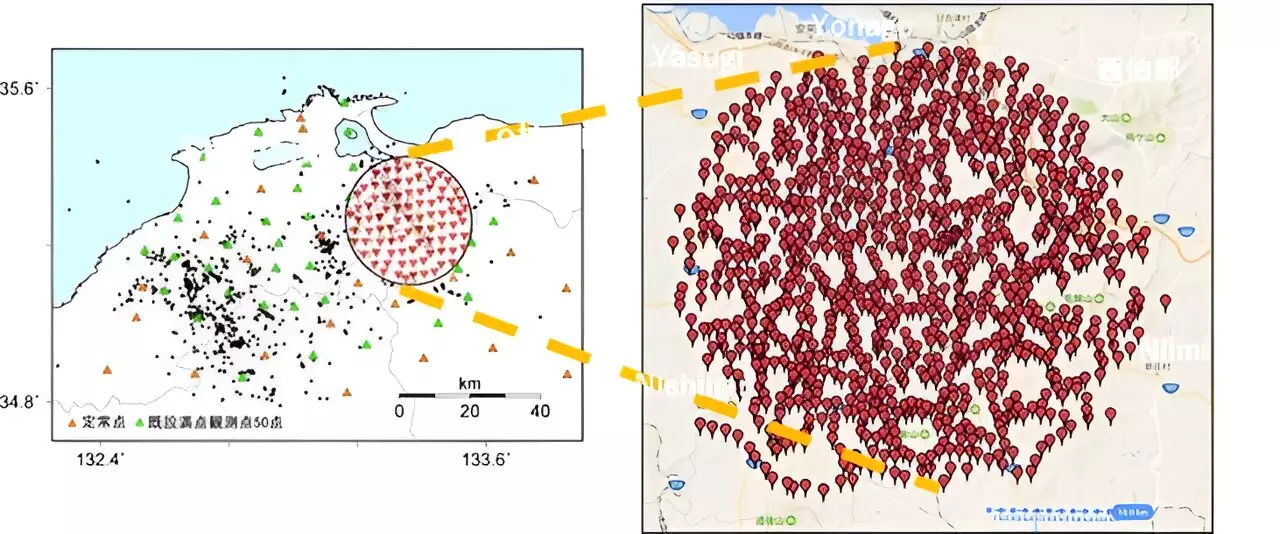Japan, a nation often recognized for its stunning landscapes and rich culture, is also infamous for its restless tectonics. Situated on the Pacific Ring of Fire, it faces the ongoing threat of earthquakes, a natural phenomenon that strikes the nation relentlessly. With thousands of minor seismic events recorded annually, Japan is a focal point for researchers aiming to decode the intricate processes leading to significant earthquakes. This article delves into groundbreaking research from Kyushu University and the University of Tokyo, revealing novel connections between fault dynamics and the frequency of seismic events.
Understanding seismicity in Japan requires careful scrutiny of the landscape shaped by tectonic plates. The geological setting has made it one of the most studied regions concerning earthquakes. Despite extensive resources devoted to seismic research, accurately predicting when a major earthquake might occur remains an elusive goal. Nonetheless, meticulous observation of minor tremors offers invaluable insights into the underlying processes of these natural disasters.
Recent studies have amplified this understanding, suggesting that the characteristics of faults—such as their strength—play a crucial role in determining the magnitude of earthquakes. As per the research findings published in Nature Communications, an essential relationship has been established between fault strength and what seismologists term the “b-value.” This factor significantly influences the ratio of earthquake sizes within a specified geographical area.
The b-value is a pivotal element in seismology that is linked to the frequency of earthquakes versus their magnitudes. Professor Satoshi Matsumoto, who spearheaded the study, elucidates that the dynamics of b-values can be indicative of the geological behavior prior to significant seismic events. Lower b-values imply a distinct presence of larger earthquakes, while higher b-values indicate a predominance of smaller quakes. This variability can change not only from one region to another but also over time, particularly as stress builds in the Earth’s crust. Previous studies observed a decline in b-values leading up to major earthquakes, suggesting an increase in stress levels exerted on the fault lines.
To explore the relationship between fault strength and seismic activity, the research teams concentrated on the area surrounding the epicenter of the Western Tottori Earthquake, a catastrophic event measuring 7.3 in magnitude that occurred in 2000. Utilizing an unprecedented network of over 1,000 seismic stations, the researchers launched an extensive observational effort that allowed them to detect minor fault movements and analyze the orientations of these faults with high precision.
Professor Matsumoto noted that even twenty years post-event, the region continues to experience numerous minor aftershocks, most of which remain undetectable to the human senses. The extensive sensor data facilitated the estimation of the stress field across fault lines—those invisible forces that dictate when a fault might finally slip and unleash an earthquake.
One of the remarkable contributions of this research lies in its identification of the behaviors exhibited by strong and weak faults. In specific stress conditions, particular faults demonstrate a tendency to slip, which may be dependent on their orientation relative to the stress field. The findings indicated that weak faults are positioned in a way that allows them to slip more readily than strong ones.
Furthermore, the study showcased that faults classified as strong tend to have lower b-values, suggesting they are more likely to produce significant earthquakes, while weaker faults, with higher b-values, are more prone to slipping before extreme stress can accumulate.
The ultimate aim of this meticulous research is to inch closer to what many in the field consider the “holy grail” of seismology: the ability to predict earthquakes with any degree of accuracy. While there remains skepticism regarding pinpointing exact moments when an earthquake will strike, understanding fault dynamics—including orientation, strength, and behavior through b-value calculations—can yield antecendents significant enough to issue warnings.
Professor Matsumoto emphasized that while absolute prediction may be unattainable, these findings enhance the possibility of forecasting the conditions that lead up to seismic events. By recognizing critical thresholds where fault lines are approaching failure, it may be possible to establish an early warning system, therefore potentially saving lives and minimizing damage.
As researchers continue to analyze the delicate dance of tectonic forces beneath Japan’s surface, their insights provide hope not only for the nation but for seismic risk management worldwide. This endeavor into the heart of the Earth signals a proactive approach towards understanding one of nature’s most formidable phenomena.

